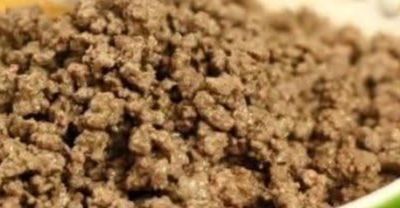Here’s your full breakdown of the “Why People Rinse Ground Beef” guide—formatted with Introduction, Origin, Cultural Significance, Ingredients Quantity, Optional Additions, Tips for Success, Instructions, Description, Nutritional Information, Conclusion, Recommendation, and Embracing Healthful Indulgence—with the wide line removed:
Why People Rinse Ground Beef
Introduction
Ground beef is a staple in countless households and recipes across the globe. However, a common question often arises in home kitchens: Should you rinse ground beef before cooking? This guide explores the rationale behind this practice, debunks myths, and delivers science-backed insights to help you cook smarter and safer.
Origin and Cultural Significance
The practice of rinsing ground beef is not rooted in any particular cuisine but rather in modern health consciousness. As low-fat diets gained popularity in the late 20th century, some cooks began rinsing ground beef in hopes of reducing its fat content. This method has persisted, especially in households trying to adopt leaner cooking habits. However, with advances in food safety and a better understanding of nutrition, the need and wisdom of this step are now questioned.
Ingredients Quantity
This guide does not involve a recipe but focuses on educational content. However, here’s what’s typically in question:
- 1 lb (450g) of raw ground beef (80/20 or leaner)
Optional Additions
While rinsing is discouraged, if you’re seeking a leaner or fresher flavor in your beef dishes, consider these alternatives instead of rinsing:
- Draining the beef after browning to remove rendered fat.
- Patting dry with a paper towel after cooking and draining.
- Using leaner ground beef (e.g., 90/10 or 93/7) from the start.
- Adding aromatics like garlic, onion, or fresh herbs to mask any strong raw odor.
Tips for Success
- Cook ground beef to 160°F (71°C) to ensure it is safe to eat.
- Drain fat after browning using a slotted spoon or by tilting the pan.
- Avoid rinsing in the sink, which can spread harmful bacteria.
- Use a paper towel to blot excess fat off the cooked meat for a leaner meal.
- Sanitize your prep area thoroughly if any raw meat contacts surfaces.
Instructions
- Preheat a skillet over medium-high heat.
- Add ground beef directly to the dry skillet—no need to rinse.
- Break it up with a spatula and cook thoroughly until browned, with no pink remaining.
- Drain excess fat by tilting the pan and using a spoon or draining into a container.
- (Optional) Blot with paper towels to further reduce grease.
- Proceed with your recipe as desired.
Description
This guide aims to educate home cooks on the do’s and don’ts of rinsing ground beef. While rinsing might seem like a good way to make meals “healthier,” it often compromises safety, flavor, and nutrition—with little to no benefit. Proper cooking and draining are far more effective and safe.
Nutritional Information (per 1 lb of 80/20 ground beef, drained and cooked):
- Calories: ~600–700 kcal
- Protein: ~60–65g
- Total Fat: ~40–45g
- Saturated Fat: ~15g
- Cholesterol: ~180mg
- Iron: ~5mg
- Vitamin B12: High
- Zinc: High
Note: Draining reduces fat content significantly; blotting can further lower it.
Conclusion
While the idea of rinsing ground beef may appear health-conscious, it’s both unnecessary and potentially dangerous. Cooking the beef thoroughly and draining excess fat is a far better approach—one that retains flavor, nutrients, and food safety.
Recommendation
Skip the rinse. Invest in leaner cuts of ground beef if you’re concerned about fat content, and always ensure safe cooking practices. Use paper towels and draining methods to reduce grease without sacrificing the integrity of the dish.
Embracing Healthful Indulgence
You don’t have to sacrifice safety or flavor to eat well. Choose high-quality lean ground beef, pair it with plenty of veggies, legumes, or whole grains, and balance your plate. Healthy eating isn’t about unnecessary rinsing—it’s about smart, safe choices that still let you enjoy the foods you love.
Would you like me to format this as a printable kitchen reference or infographic-style summary?

